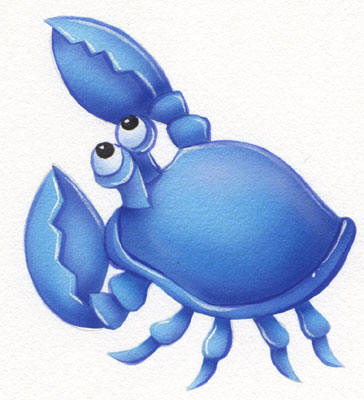Soft Shelled Crab IsOne Of Paul's Favorite Non-Vegetarian Dish

If you've never had a soft-shelled crab, you've missed out on a special dining pleasure. These crabs are pulled from the Chesapeake Bay (near the historic town of Crisfield, Maryland) just prior to molting. They're placed in tanks and briefly held until they shed their hard outer shell. While in this soft, succulent state, you fry them and gobble them up!
1 c. all-purpose flour
1 tsp. salt
1/4 tsp. pepper
1/8 tsp. paprika (optional)
Oil for frying
Clean soft shell crabs by first cutting off the eyes with kitchen shears across face of the crab. Remove the mouth.
Lift the points of crab and remove the sandbags and gills. Turn crab over and remove apron at lower part of shell. Wash thoroughly; pat dry.
Mix flour, salt and pepper together. Dip crab in seasoned flour; dust off excess. Fry in oil 3 to 5 minutes or until golden brown, turning once. Drain on paper towels. Serve with lemon wedges and favorite seafood sauce. Serves four.

Crabs
Crabs (called kani when used in sushi) are decapod crustaceans of the infraorder Brachyura, which typically have a very short projecting "tail" (Greek: brachy = short, ura = tail), or where the reduced abdomen is entirely hidden under the thorax. They are generally covered with a thick exoskeleton, and are armed with a single pair of chelae (claws). Crabs are found in all of the world's oceans. Additionally, there are also many freshwater and terrestrial crabs, particularly in tropical regions. Crabs vary in size from the pea crab, only a few millimetres wide, to the Japanese spider crab, with a leg span of up to 4 m.
About...
Soft-shell crab, sometimes abbreviated to just soft-shell, is a seafood delicacy with the entire crustacean capable of being eaten, a result of catching and cooking crabs shortly after they molt their hard shell.
The exact species used as soft-shells varies from region to region. In the United States, the blue crab (Callinectes sapidus) is used typically, although the use of the mangrove crab in Asia has provided another source for this seasonal food.
As these crabs grow larger, their shells cannot expand, so they molt the exteriors and have a soft covering for a matter of days when they are vulnerable and considered usable.
Fishermen often put crabs beginning to molt aside, until the molting process is complete in order to send them to market as soft-shells.
Crabs should be kept alive until immediately before cooking by the customer or restaurant so that they are fresh. Usually crabs must be eaten within four days of molting to be useful as soft-shell crabs.
They begin to rebuild their shells after that, and when eaten, have a thin shell developing. These are often referred to as "papershells" or "tinbacks" and are more crunchy when eaten, making them less desirable to many people. With the blue crab in cold waters this molting is highly seasonal and usually lasts from early May to July.
Demand for this delicacy has increased with the use in Japanese and other cuisines, so that the mangrove crab has been used as an alternative source from Asia.
Because mangrove crabs grow in tropical muddy flats all year round, such swamps provide a continual source of soft-shell crabs. In warmer waters such as the Gulf of Mexico, soft-shell crabs are available for longer periods.
The crabs continue to molt throughout the year, but in smaller numbers, sometimes making it unprofitable to fishermen to maintain traps through those periods.